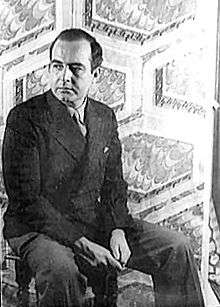
Agnus Dei (Barber)
Agnus Dei (Lamb of God) is a choral composition in one movement by Samuel Barber, his own arrangement of his Adagio for Strings (1936). In 1967, he set the Latin words of the liturgical Agnus Dei, a part of the Mass, for mixed chorus with optional organ or piano accompaniment. The music, in B-flat minor, has a duration of about eight minutes.
History
Barber's Adagio for Strings began as the second movement of his String Quartet, Op. 11, composed in 1936. At the request of Arturo Toscanini, he arranged it for string orchestra, and in January 1938 sent that version to the conductor, who premiered it in New York with the NBC Symphony Orchestra. In setting it to the liturgical Agnus Dei, a part of the Mass, Barber changed the music only a little. As with the other arrangements of Adagio for Strings, it was published by G. Schirmer.
Music
Graham Olson describes the composition for Allmusic. After reflecting the history and pointing out the Adagio's associations with mourning, nostalgia, love and passion, qualified as "sentimental Romanticism", he writes about the choral setting: "Barber brought to the surface the work's sense of spirituality." He observes similarities to works of the Renaissance by Palestrina and Gabrieli. Violinist Phillip Ying says about the quartet movement: "The score looks so clear, like a counterpoint exercise, and the power of it is in the economy of means."